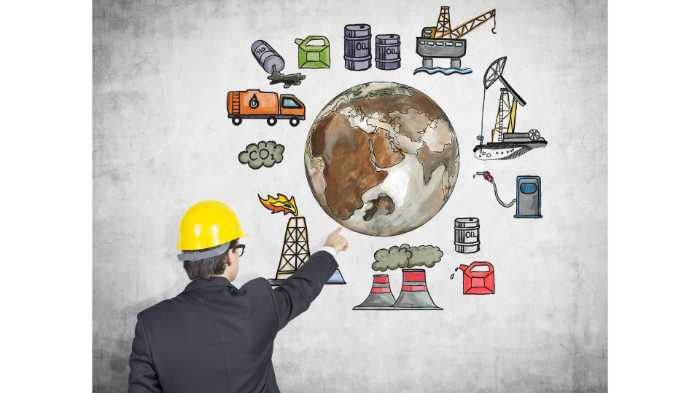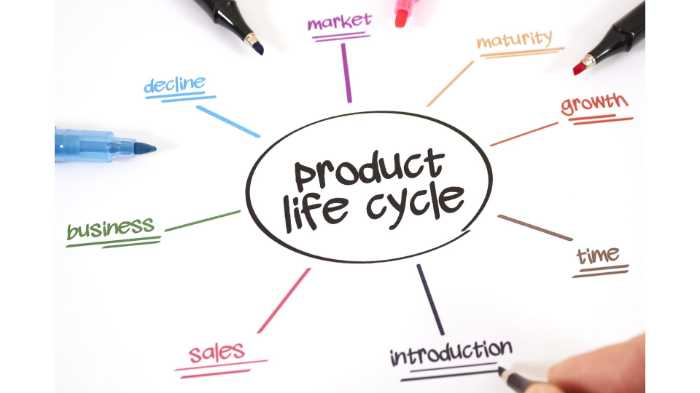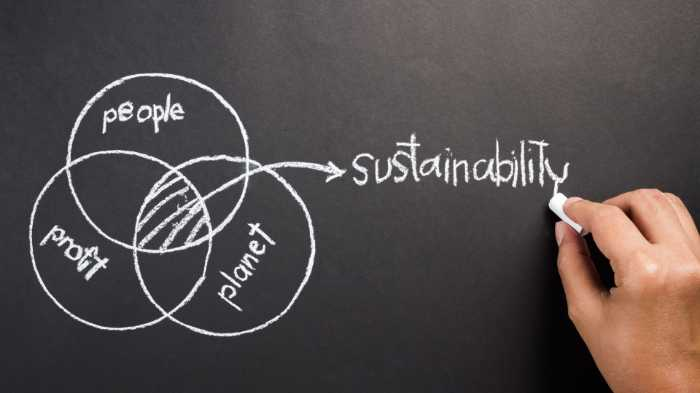
Making your business more eco-friendly is easier than you think! One way to start making a difference is by issuing environmental product declarations (EPDs) for your products. An EPD is a document that outlines the environmental impacts of a product throughout its life cycle. This can include the manufacturing process, use, and disposal of the product. Issuing an environmental product declaration can help your business become more sustainable and environmentally friendly. In this blog post, we will discuss what an EPD is and how to create one for your business. Let’s get started!
What is an Environmental Product Declaration (EPD)?

Environmental Product Declarations (EPDs) are documents that provide transparent and standardized information about the environmental footprint of a product or material. They follow a rigorous, internationally-recognized set of guidelines, and their creation is overseen by an independent third party. EPDs can cover the entire life cycle of a product, from raw material extraction to disposal. This makes them an invaluable tool for businesses and consumers who want to make more informed decisions about the products they buy and use.
By clearly communicating the environmental impacts of a product, EPDs help us to choose products that are better for the planet. And as more and more businesses adopt this practice, we can expect to see even greater progress in the fight against climate change.
What is the basis for an environmental product declaration?
An environmental product declaration (EPD) is a report that provides detailed information about the environmental impact of a product or material. The basis for an EPD is a life-cycle assessment or LCA. An LCA report takes into account all of the environmental impacts of a product or material, from the extraction of raw materials to the disposal or recycling of the finished product. EPDs are voluntary reports that are typically created by manufacturers and used by architects and engineers to compare the key environmental impacts of different products. However, EPDs are not regulated in the United States, and there is no standard format for creating them. As a result, it can be difficult to compare different EPDs and to know how much weight to give to their findings.
What is the life cycle assessment of a product?

A life cycle assessment (LCA) is a tool used to evaluate the environmental performance of a product or system, from the cradle to the grave. The goal of a life cycle assessment is to understand the potential impacts of a product or system throughout its entire life cycle in order to identify ways to improve its sustainability.
The first step in a life cycle assessment (LCA) is to inventory all of the materials and energy inputs used, as well as all of the waste outputs generated by the product or system. This data is then used to calculate the environmental footprint associated with each stage of the product’s life cycle.
These impacts are typically expressed in terms of greenhouse gas emissions, water use, land use, and other ecological indicators. The results of a life cycle assessment (LCA) can be used to improve the environmental performance of a product or system by reducing its impact at each stage of its life cycle.
Oceans Integrity: Implementing the Ocean Clean Up!
How can a business create an environmental product declaration?

Businesses can create an environmental product declaration (EPD) by first gathering data on the environmental impacts of their product or service. This data can be collected through life cycle assessments (LCAs), which analyze the cradle-to-grave environmental impacts of a product. Once data has been collected, it must be organized into an EPD format.
EPDs can be created using different methodologies, but all must include information on the product’s impact on climate change, water and air quality, and land use. Businesses also need to provide evidence to show that their product has lower environmental impacts than similar products on the market. Creating an environmental product declaration (EPD) is voluntary for most businesses, but some industries may require it as part of sustainability certification programs.
Why should a business issue EPDs for its products?
Environmental Product Declarations, or EPDs, are becoming increasingly important in the world of business. Many companies are now requiring their suppliers to provide EPDs for their products, and there are a number of good reasons why:
1. Increases transparency

Environmental Product Declarations (EPDs) are a way for businesses to provide information about the environmental impacts of their products. By issuing EPDs, companies can help to increase transparency and inform purchasers about the sustainability of their products. This information can be used by businesses to make more informed decisions about which products to purchase.
In addition, EPDs can help to build trust between companies and consumers. By providing accurate and up-to-date information about the environmental impacts of a product, businesses can show that they are committed to sustainability and responsible product stewardship. As a result, EPDs can play an important role in helping businesses to create a more sustainable supply chain.
2. Increases market share

As the world becomes more and more aware of the need to protect the environment, businesses that take steps to reduce their impact are seeing a surge in demand for their products. One way to demonstrate a commitment to environmental stewardship is to issue Environmental Product Declarations (EPDs) for your products. EPDs can help a business capture a larger share of the sustainable market.
In addition, EPDs can help companies win tenders and access market-based incentives, giving you a competitive edge in today’s green economy. With so many benefits, there’s no reason not to start issuing EPDs for products today.
3. A valuable marketing tool

While there are many benefits to issuing an environmental product declaration (EPD) for your product, one key reason is that it can be a powerful marketing tool. Because EPDs provide an independent, third-party evaluation of a product’s environmental impact, they valuable marketing tools for potential customers valuable information about a product’s sustainability. In addition, the EPD certification logo is recognizable and trusted by consumers, making it an effective way to communicate your product’s green credentials.
As more and more consumers seek out eco-friendly products, an EPD can help you stand out from the competition and tap into this growing market. In short, an EPD is an important marketing tool that can help your business succeed in the sustainable marketplace of the future.
4. Levels the playing field for companies

When it comes to sustainability, all companies should be on a level playing field. By issuing an environmental product declaration (EPD) for your product, you are ensuring that your company is held to the same standards as other companies in your industry. This not only promotes fair competition but also encourages all companies to strive for greater sustainability.
In addition, customers are becoming increasingly aware of the importance of sustainability, and they are often willing to pay more for products that have been certified as environmentally friendly. As a result, issuing an EPD can help your company to attract new customers and boost its bottom line.
5. Helps meet sustainability reporting requirements

Environmental Product Declarations, or EPDs, are documents that provide comprehensive information about the environmental impacts of products throughout their life cycles. EPDs can help businesses meet a variety of sustainability reporting requirements, such as those of the Global Reporting Initiative (GRI). In addition, EPDs can be used to support eco-labeling initiatives and voluntary programs such as Leadership in Energy and Environmental Design (LEED). By issuing an environmental product declaration (EPD) for your product, you can demonstrate your commitment to transparency and sustainable development.
6. Identify opportunities to improve

One reason your business should issue EPDs for its products is that they can help you to identify opportunities to reduce the environmental impact of your products and make improvements. By understanding the potential impacts of your products, you can work to minimize those impacts throughout the product life cycle.
Additionally, EPDs can provide valuable data that can be used to benchmark the performance of your products and compare them to others on the market. This information can be used to support continuous improvement efforts and drive innovation. As a result, issuing EPDs can help you create more sustainable products and improve your business’s reputation.
7. Build trust with your stakeholders

EPDs are standardized reports that quantify the environmental impacts of products and services. By issuing EPDs for your products, you can show your stakeholders that you are committed to sustainability and that you are transparent about the environmental impacts of your business. This can build trust with your stakeholders and help you to differentiate your business from your competitors.
You can’t improve what you don’t measure.
Free Verified Carbon Calculators.
Erase Your Carbon Footprint in less than 5 Minutes
Personal Carbon Footprint Calculator
Business Carbon Footprint Calculator
How can we check the environmental impact of a product?
There are a number of ways to check the environmental impact of a product before making a purchase:
1. Eco-labels
Eco-labels are one way to check the environmental impact of a product. These labels provide information about a product’s compliance with environmental standards. They can be found in a variety of products, from appliances to clothing. However, not all eco-labels mean the same. Some labels, such as the ENERGY STAR label, are voluntary certification programs. Others, such as the ISO 14001 environmental management system, are voluntary international standards. The most common and well-known label is the recycled symbol, which means that the product contains recycled materials. Moreover, the organic label means that the product is made with organic ingredients.
When choosing a product, look for an eco-label that meets your needs. For example, if you’re looking for a product that is energy-efficient, look for the ENERGY STAR label. If you’re looking for a product that has low emissions, look for the ISO 14001 environmental management system label. And if you’re looking for a product that is made with recycled materials, look for the recycled symbol. By checking for eco-labels, you can be sure that you’re buying a product that meets your standards for environmental responsibility.
2. Check the information on the company’s website
When you’re trying to make more environmentally friendly choices, it can be tough to know where to start. One easy way to get started is to simply check the website of the company you’re thinking of buying from. Many companies now provide information about their environmental practices on their websites, so it’s worth taking the time to do some research before making a purchase. This way, you can easily compare the environmental impact of different products and make the best choice for your needs. Additionally, many companies are now providing more detailed information about their products, so you can be sure that you’re getting what you expect in terms of quality and environmental friendliness.
3. Look for independent reviews
There are a number of ways to research the environmental impact of a product before making a purchase. While some product manufacturers may provide information on their websites or labels, it is often more reliable to look for independent reviews. These can be found in magazines or online and provide an objective assessment of a product’s sustainability.
When reading reviews, look for those that are accredited by a third-party organization, such as Greenpeace or the Sierra Club. This will add another level of credibility. Pay attention to the reviewer’s methodology, as this will affect the accuracy of their findings. Finally, make sure to read multiple reviews to get a well-rounded picture of the product’s environmental impact. By taking the time to do your research, you can be sure that you are making the most sustainable choices for your home and family.
What is the EPD verification process?
The EPD verification process is a way to ensure that an EPD meets international standards. EPD Program Operators (EPOs) are responsible for verifying that an EPD meets all the requirements of the International EPD System. In order to verify an EPD, EPOs must review the development process, check the data and calculations, and confirm that the report meets all requirements. If an EPD is found to be compliant, it will be issued a verified EPD. Verified EPDs are valid for four years and can be used by companies to demonstrate their commitment to environmental sustainability. One of the benefits of having a verified EPD is that it can help a company to gain industry-wide recognition for its environmental performance.
Conclusion
There are a number of ways to make your business more environmentally friendly. Similarly, it’s important to look for eco-labels when making purchases. By looking for products that have been independently reviewed, you can be sure that you’re getting the best quality product while also reducing your environmental impact. Additionally, it’s important to research companies and their environmental practices before making a purchase. Many companies now provide detailed information about their products and practices on their websites, so it’s easy to compare different options and make the most sustainable choice for your business. Finally, the EPD verification process is a great way to ensure that you’re getting a product that meets international standards for environmental sustainability. By taking the time to research your options and make informed choices, you can help to make your business more eco-friendly.
FAQs

How are Environmental Product Declarations different from traditional product labels?
Environmental Product Declarations (EPD) are documents that provide information about the environmental impacts of a product. Unlike traditional product labels, which often focus on ingredients and performance, EPDs provide a complete picture of a product’s sustainability. As such, they have become an increasingly important tool in the marketplace, as consumers and businesses alike seek to reduce their environmental footprint.
What are the product category rules in EPD?
The product category rules in EPD are a set of guidelines that govern how providers create and distribute product data. These specific rules ensure that products are accurately represented and classified, making it easier for buyers to find the products they need. Additionally, the product category rules help to standardize the way that product data is shared between different businesses, making it easier for buyers and sellers to connect with each other. Ultimately, the applicable product category rules in EPD help to make the process of buying and selling products more efficient and streamlined.
What are the EPDs of construction products?
Construction EPDs are defined in the International Green Construction Code as “declarations of a product’s environmental performance, based on life cycle assessment, for use in green building rating systems.” They are voluntary reports that aim to provide objective, third-party-verified information about the environmental impacts of construction products. These EPDs can be used by the construction sector, including contractors, architects, and engineers, to make more informed decisions about the products they specify and use in their construction works. In addition, EPDs can be a valuable tool for the construction industry to communicate the environmental benefits of their products to customers and other stakeholders.
What is the LCA study?
The life cycle assessment (LCA) study is a fully comprehensive report that analyzes the environmental impacts of a product or service throughout its entire life cycle, from raw material extraction to production, use, and disposal. The study covers all stages of the life cycle and includes a comprehensive assessment of all relevant environmental impacts, such as air pollution, water pollution, greenhouse gas emissions, land use, and resource consumption. The study is conducted using a systematic methodology that is internationally recognized and standardized. The results of the study are typically presented in the form of an Environmental Product Declaration (EPD), which allows companies to compare the environmental performance of their products and services.
What is the role of an EPD program operator?
The role of an EPD program operator is to develop and manage environmental declarations. EPDs provide information on the life cycle environmental impacts of products and services. They help businesses and consumers compare the environmental performance of different products and make informed choices about which products to buy. EPDs can cover a wide range of topics, including global warming potential, water use, and energy use. The development of an EPD involves a comprehensive life cycle assessment (LCA) of a product or service. LCAs are complex studies that require expert knowledge and experience. As such, EPD program operators play an essential role in ensuring that accurate and reliable information is available to businesses and consumers.
You might also be interested in reading…
How to Write a Sustainability Report
What is the Global Reporting Initiative?

Dean Emerick is a curator on sustainability issues with ESG The Report, an online resource for SMEs and Investment professionals focusing on ESG principles. Their primary goal is to help middle-market companies automate Impact Reporting with ESG Software. Leveraging the power of AI, machine learning, and AWS to transition to a sustainable business model. Serving clients in the United States, Canada, UK, Europe, and the global community. If you want to get started, don’t forget to Get the Checklist! ✅
